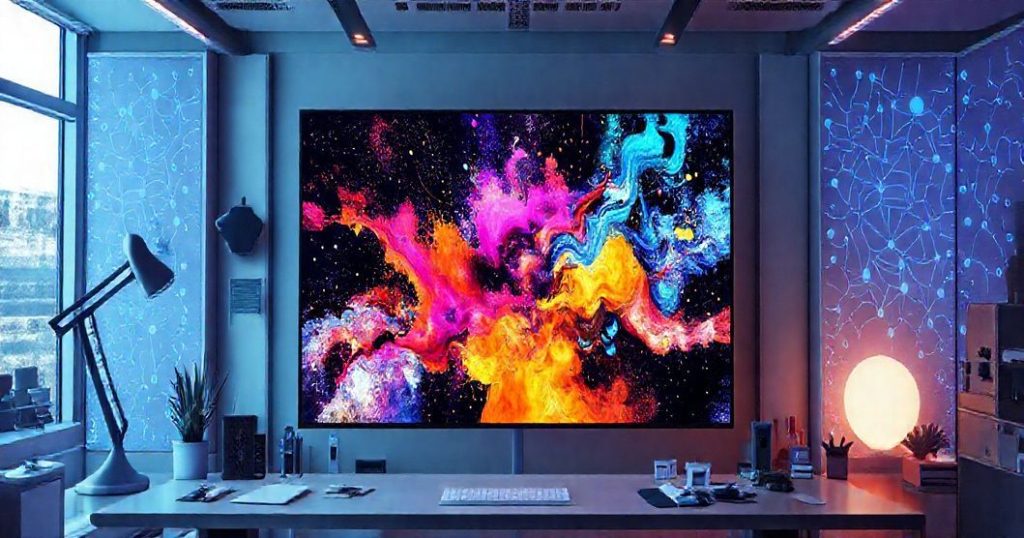Unlock AI Image Generation: A Comprehensive Guide to Improve Prompt Quality
AI image generation has revolutionized the creative landscape, enabling anyone to produce professional-grade visuals without extensive design experience. This technology leverages sophisticated neural networks trained on billions of image-text pairs to understand natural language prompts and synthesize new images that match the user’s intent. With the democratization of visual content creation, small businesses, content creators, and hobbyists can now create compelling marketing visuals, educational illustrations, and social media graphics without expensive subscriptions or years of training. As these tools continue to evolve, they’re not replacing human creativity but rather amplifying it, allowing creators to focus on ideation and refinement while the AI handles the technical execution.
Understanding AI Image Generation Basics
AI image generators use complex algorithms to interpret text prompts and create corresponding images. These models are trained on vast datasets of images and text to learn associations between words and visual concepts. When you input a prompt, the AI breaks it down into semantic components, maps these to learned visual features, and generates an image that represents your description. The quality of output depends heavily on the clarity and specificity of your prompt, making prompt engineering a critical skill for effective AI image generation. By crafting well-structured prompts, you can significantly improve the quality and relevance of generated images, achieving results that closely align with your creative vision.
Crafting Effective Prompts
Crafting effective prompts is both an art and a science, requiring a deep understanding of how AI models interpret language and generate images. A well-crafted prompt should be clear, concise, and descriptive, providing the AI with enough context to create a relevant and accurate image. For instance, instead of typing ‘a dog,’ a more effective prompt might be ‘a fluffy golden retriever playing fetch in a green meadow with a bright blue sky.’ This level of detail helps the AI understand not just the subject but also the setting, mood, and style you’re aiming for. Experimenting with different prompting approaches and analyzing the results can help you refine your technique and achieve better outcomes with AI image generation tools.
Leveraging Free AI Image Generators
Several free AI image generators have made this technology accessible to everyone, offering powerful tools without financial barriers. These platforms provide user-friendly interfaces and a range of features that allow users to create professional-quality images quickly and easily. By leveraging these free tools, you can experiment with AI image generation, develop your skills, and produce stunning visuals without any upfront costs. Whether you’re a content creator looking to enhance your blog posts, a marketer seeking eye-catching social media visuals, or simply someone who wants to bring their imagination to life, free AI image generators offer a convenient and cost-effective solution. As you explore these platforms, you’ll discover the potential of AI-powered creativity and how it can transform your visual content creation process.
Improving Prompt Quality for Better Results
Improving prompt quality is essential for achieving better results with AI image generators. A high-quality prompt provides clear and specific instructions, enabling the AI to create images that closely match your expectations. To craft effective prompts, consider the level of detail, context, and specificity required for your desired outcome. For example, if you’re generating an image for a marketing campaign, your prompt should include details about the brand, target audience, and desired mood or style. By refining your prompts and experimenting with different approaches, you can significantly enhance the quality and relevance of generated images, ultimately achieving more impactful and engaging visuals.
Common Challenges and Solutions
While AI image generation offers immense creative potential, it’s not without challenges. One common issue is the difficulty in achieving precise control over the generated images, particularly when working with abstract or complex concepts. To overcome this, consider using more specific and detailed prompts, or explore advanced features like prompt tuning and iterative refinement. Another challenge is ensuring consistency across multiple generated images, which can be addressed by developing a clear visual style guide and applying it consistently to your prompts. By understanding these challenges and implementing practical solutions, you can maximize the effectiveness of AI image generation and produce high-quality visuals that meet your creative needs.
Future Trends in AI Image Generation
The future of AI image generation looks promising, with ongoing advancements in AI technology and increasing adoption across various industries. As AI models become more sophisticated, we can expect to see even more realistic and detailed images, as well as improved control over the generation process. The integration of AI image generation with other creative tools, such as video editing and 3D modeling, will further expand its applications and potential. Moreover, the development of more user-friendly interfaces and accessible platforms will make AI image generation available to a broader audience, enabling more people to explore their creativity and produce stunning visuals. By staying informed about these trends and advancements, you can stay ahead of the curve and leverage AI image generation to achieve your creative goals.



